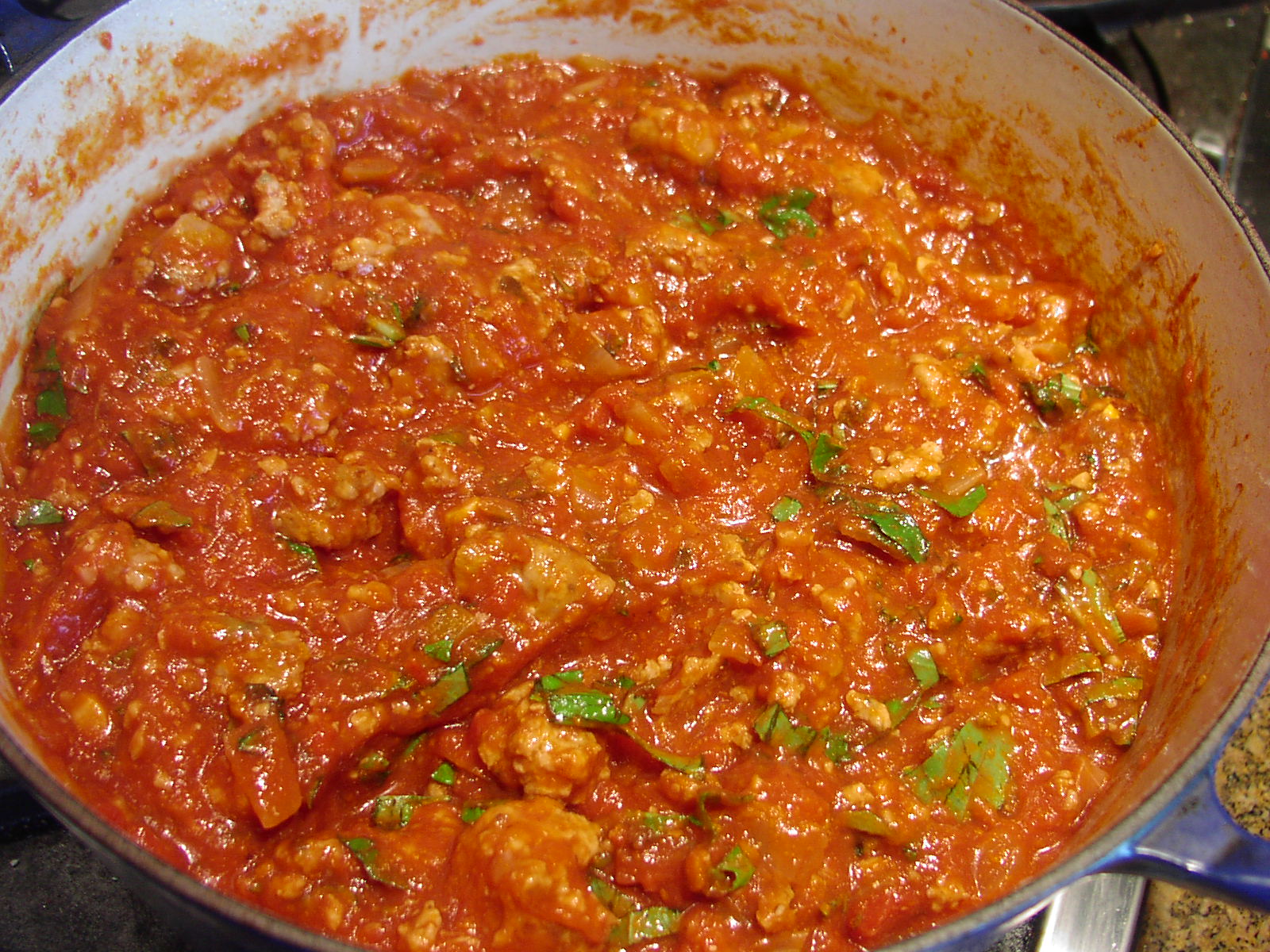Once in a while I have an “aha moment”. And usually when this happens I wonder why in the world I didn’t think of this (whatever it might be) sooner! Well one of those “aha moments” occurred this last week when I was preparing Lasagna Bolognese. I had prepared the red sauce for the lasagna and was giving it a taste to make sure the seasoning was correct, when it hit me that this easy sauce, with the possible addition of a grated carrot and a stalk of celery, would be perfect over al dente spaghetti. Add a sprinkle of Parmesan cheese, and Bob’s your uncle!
And yes, I have other recipes for spaghetti sauce, but this particular recipe uses very simple ingredients, doesn’t take all day to simmer, and always turns out wonderfully. Plus it freezes beautifully.
Now I know what those of you who are Italian sauce experts will be thinking when you look at the list of ingredients. (And yes, I can read minds!) Where are all the rest of the herbs usually in a recipe for ragù, like thyme, rosemary, Italian seasoning, for example? And what about wine? Where’s the wine in this recipe? Well the answer is quite simple really. Additional herbs are simply not necessary. And frankly, wine can sometimes make an Italian red sauce taste too acidic.
Now don’t get me wrong, I sometimes use wine in my sauces, but this one just doesn’t need it. Neither does it need any sugar, especially if you use canned Italian tomatoes. And then, even if the sauce is a slight bit acidic, a tablespoon or two of butter right at the end takes care of the problem in a second. (I really do try to stay away from additional sugar if at all possible.)
So next time you want a hearty Italian meal that your entire family is sure to like, make up a big old batch of this sauce, boil up some spaghetti (al dente of course) and grate up some Parmesan cheese. Serve with a simple green salad, and perhaps some garlic bread, and you have a recipe for success. And of course, since you didn’t pour any wine in your sauce, you should have plenty to pour in your glass. And if this sauce doesn’t fairly scream out for a nice rich cabernet, pinot noir, or Sangiovese as an accompaniment, I’m not the proud owner of “Essentials of Classic Italian Cooking” by Marcella Hazan. And I’ve got my copy right in front of me as I write!
- 1 T. extra-virgin olive oil
- 1 lb. bulk Italian sausage (either chicken or pork)
- ½ c. chopped onion
- 1 small carrot, grated
- 1 stalk celery, very finely chopped
- 2 cloves garlic, chopped
- 1 (28-oz.) can chopped or diced tomatoes (Italian tomatoes preferably)
- 1 bay leaf
- pinch crushed red pepper flakes
- 1 tsp. dried oregano
- ½ tsp. kosher salt
- freshly ground black pepper
- ½ c. loosely packed fresh basil chiffonade*
- 1-2 T. butter, optional
In a large covered sauce pan, heat the olive oil over medium high heat. Add the sausage, chop it into small pieces as it cooks, and sauté until nicely browned. Add the onion, carrot, and celery; sauté until the onion is soft and translucent, about 4 minutes. Stir in the garlic and cook for an additional minute. Add the tomatoes, bay leaf, red pepper flakes, oregano, salt, and pepper. Stir to combine ingredients. Bring to a boil, reduce heat, cover, and simmer for about 30 minutes. When the sauce is done, remove from heat, remove bay leaf, add basil, and adjust seasoning. If the sauce tastes acidic, add butter 1 tablespoon at a time to round out the flavor. (Even better if made a day or two ahead.)
Please note: This is a very thick and chunky sauce. If you prefer a more “saucy” sauce, add a small can of tomato sauce along with the chopped or diced tomatoes.
*Chiffonade (pronounced “shif-oh-nod”) is a knife technique used for cutting herbs and leaf vegetables such as lettuce into thin strips or ribbons. To chiffonade leaves of basil, stack the basil leaves and roll them into a tube. Then carefully cut across the ends of the tube with your knife to produce fine strips.

